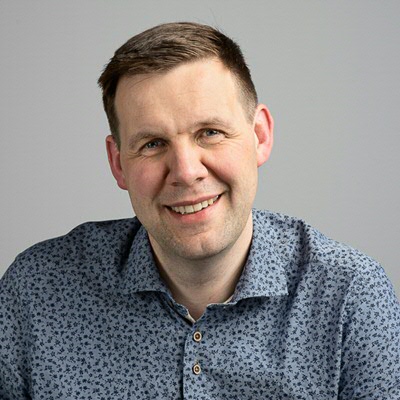The two sides of hydrogen production - a focus on the research of Wesley Browne
Hydrogen seems to be a very necessary element of the sustainable society. And it is a logical choice given its many perks: hydrogen doesn’t emit CO2 when you produce or use it, and you can use it in different ways. That is why researchers are throwing themselves into this area of research, and look for new materials that could make the hydrogen production more efficient. But professor Wesley Browne of the Stratingh Institute for Chemistry takes a slightly different approach. He tries to make the side-reaction of the hydrogen production more useful, and create local systems that would provide both energy and chemical feedstock.

“Hydrogen will give us energy security, and make us less dependent on oil from Saudi Arabia or gas from Russia”, says Browne. “And to maximize its potential, we need to look at the production from every angle.” That is why Browne does not only look at the hydrogen process from an energy point-of-view, but also wants to use it to produce a chemical feedstock for industry. “At this moment we produce lots of oxygen as a by-product of hydrogen. This is totally useless”, says Browne. According to him, we can better use the hydrogen reaction to make other chemicals like hydrogen peroxide: “The challenge is not the hydrogen production itself, but what you do on the other side. If we can work that out, you could use the hydrogen production to fuel other chemical reactions.” He is for instance looking at the possibility of using the oxidation reaction of the hydrogen production to produce hydrogen peroxide. “That would be a great second molecule to make, because it is a useful oxidant in many industrial processes.”
Large quantities
One downside of this approach is that hydrogen has to be produced in very large quantities, and it is unlikely to find another molecule that we need that much. But Browne does not think this needs to be a disadvantage: “This means we don’t have to find one very successful reaction, we just need to be able to make lots of different chemicals.” To make this work, Browne is collaborating with other groups that search for new materials and electrochemical cell designs. He does a lot of excited state spectroscopy and other mechanistic studies to find out what materials might do the trick. Right now, most of the large-scale photocatalytic hydrogen production run on platinum electrodes. “That is a very expensive material, so it would be better to find some cheaper alternatives that make it more accessible. And different materials will also make different reactions possible.”
The key seems to be to find a system that allows the whole reaction to take place in one step. “You don’t want to produce oxygen, transfer that to a different reactor and then make other chemicals. That wastes to much energy and time.” A nice example of the efficient process is found in Delfzijl, where they use iron and titanium electrodes to make chlorine for their salt. Hydrogen is also produced during this reaction, as a sort off by-product. Browne thinks we need more reactions like this, but it is also very important to tune these reaction to the local need: “You don’t want to transport hydrogen, that wastes a lot of unnecessary energy. If you can make hydrogen locally, and make sure the by-product is a chemical that a nearby company needs, you can create a great infrastructure.”
Local transport
This locally produced hydrogen can then be used for things like public transport and trucks. “One of the main advantages of hydrogen is that you can refill your tank quickly, and it gives you more range then current electric motors”, says Browne. “And if you need more, you can very simply add another stack of electrochemical cells.” This flexibility is also the reason why Browne views hydrogen as a good buffer for the fluctuation in sustainable wind- or solar energy. “You can very easily adjust the production to the availability of electricity. And you could also store this other chemical, and for instance burn it again if you need extra energy.”
Unfortunately, this local system is still far away at the moment. Researchers first need to find new materials that would aid this system. “A lot is going on in universities all over the world”, Browne says. “And we are getting closer and closer. We just need to find lots and lots of different oxidation reactions that would add value to the production.” But even if they do, Browne thinks companies would not turn around that easily: “For companies it is easier and cheaper to just keep on using their current systems. Only if they are forced to change by for instance new laws that would prevent them from using certain materials, they would very carefully take the leap.”
More news
-
15 September 2025
Successful visit to the UG by Rector of Institut Teknologi Bandung
